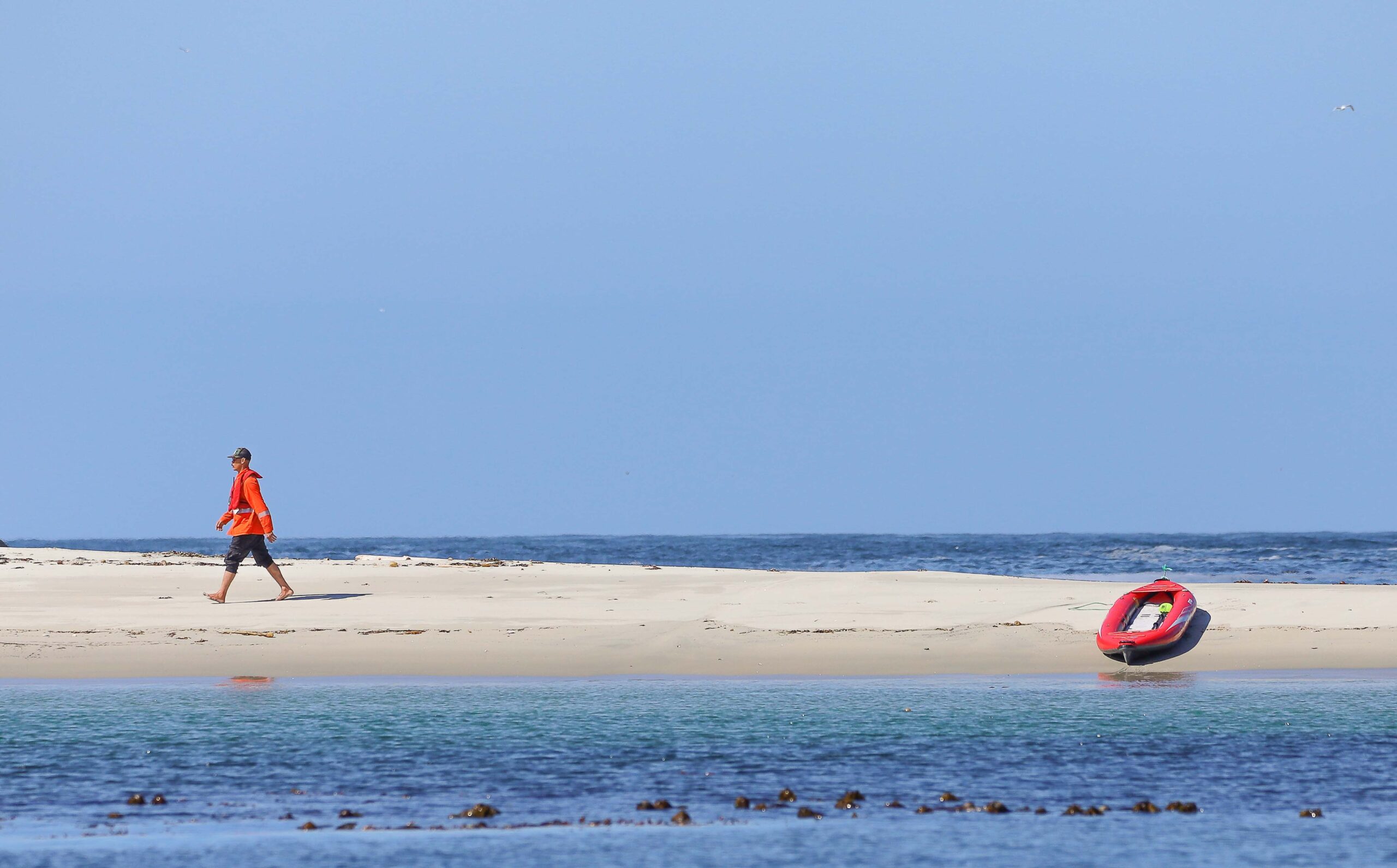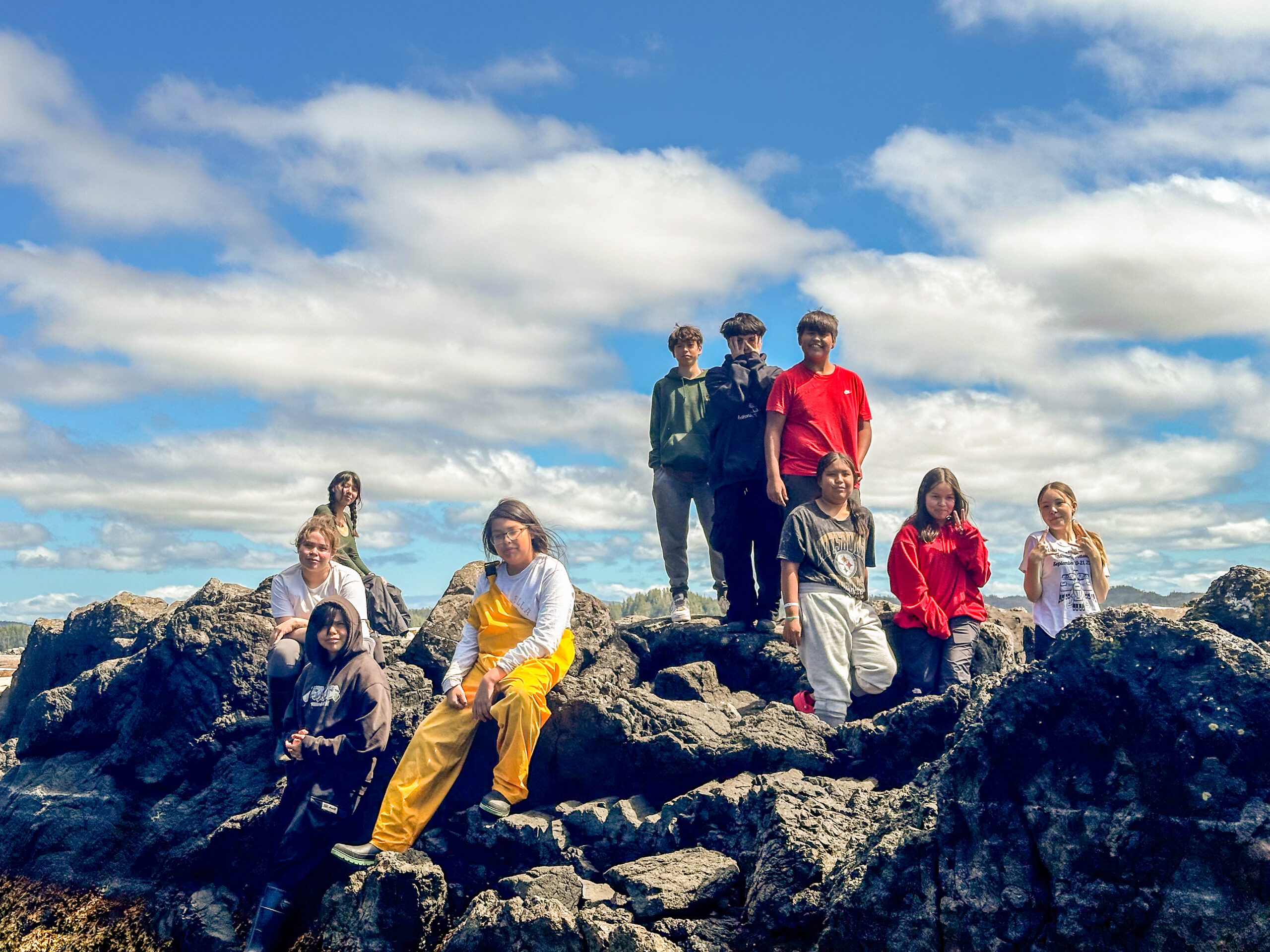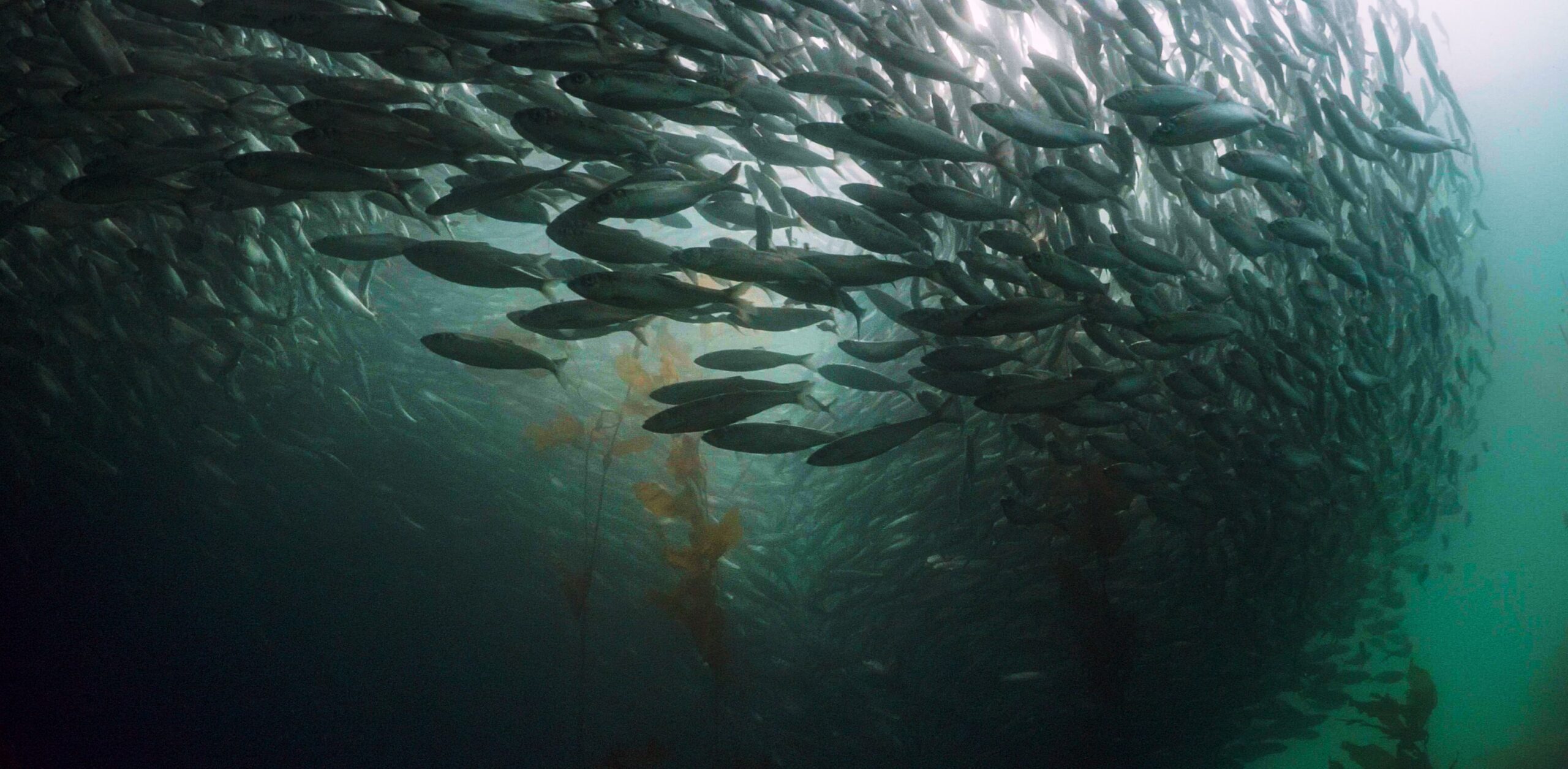Stewarding one of the most remote territories on the BC coast is something Wuikinuxv people have done for thousands of years, and while the methods they use and the projects they tackle may have changed, the premise remains the same: keeping one’s lands and waters clean and healthy is an inherent responsibility, and despite the challenges, it needs to be done.
“For me, the most impactful part of the project was reconnecting with the land and waters,” said Dee Walkus, Wuikinuxv member. “It’s one thing to pass by areas on boat or plane, it’s a completely different experience to walk on the shores and see first-hand how the outside world is polluting my homelands.”
Marine debris is a major problem all over the world and the BC coast is no exception. By the end of the project, the team cleaned 96 kilometres of Wuikinuxv waters and coastline, removed over 20,000 lbs of debris and employed 20 people, 11 of which were local Wuikinuxv members. It was not an easy undertaking, and it required the right people, partnerships, equipment, timing, and funding to complete.
The work was funded as part of the BC government’s Clean Coast Clean Waters Initiative, which began in 2019. Over the summer and fall of 2024 and early June 2025, the Wuikinuxv Nation managed to clean a good portion of the isolated and perilous coastline over a span of four separate trips. The effort was in partnership with Rugged Coast Research Society and supported by Clean Coast Clean Waters funding delivered by Coastal First Nations and additional funding delivered by Price Waterhouse Coopers.
“Seeing what kind of garbage is out there was eye-opening. There are so many floats and so much Styrofoam it’s just heartbreaking,” said Walkus. “Removing the garbage provided a peace of mind that I am doing my part to cultivate an even deeper sense of untouched and wildness to the Wuikinuxv territory. I am hopeful that this work can tip the scales even just a little bit to restore some balance to natural world.”
Wuikinuxv Nation’s traditional homelands surround present-day Rivers Inlet on the Central Coast, extending from the Koeye River to Cranston Point to the head of Wuikinuxv Lake. Due to the remoteness of the areas from Wuikinuxv village, which is located at the head of Rivers Inlet along the Wannock River, just below Oweekeno Lake, the group had to camp out for up to two weeks at a time to complete the clean-up efforts. They set up base camps on Calvert Island, where they also collected all the garbage in that area, and at Clam Beach on Penrose Island and took day trips from there.
“I definitely felt more of a connection with the land,” said Adam Nelson, a Wuikinuxv Guardian who participated in several trips. “It was cool to get a closer look at the shorelines. All I could think of was our ancestors on these rocks and islands, and if you looked closely, you could find little artifacts everywhere.”
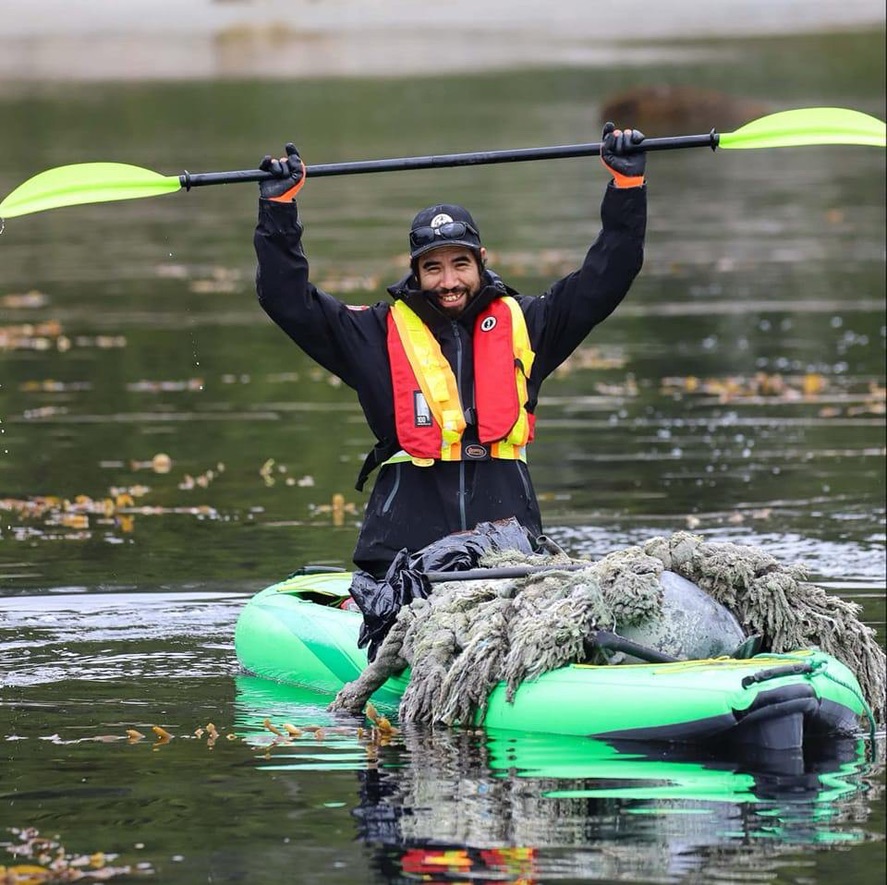
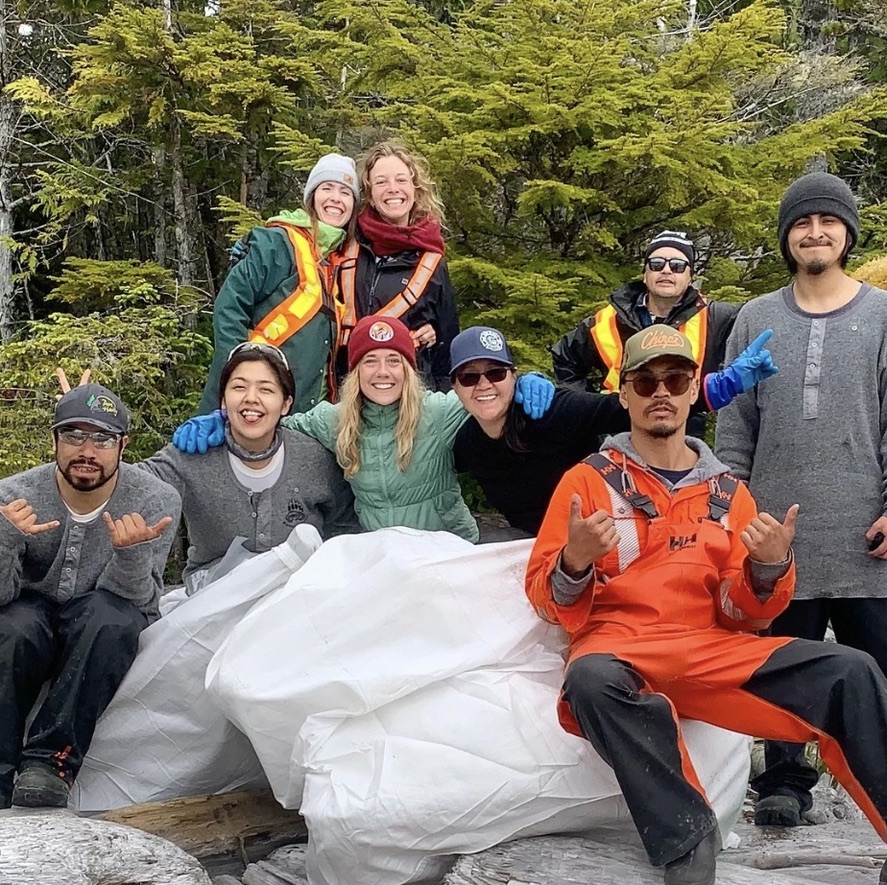
The project was challenging and complex. The coastline is rough and unforgiving with huge swells crashing onto the shore, making the beaches incredibly difficult to access. Weather dictated the days of work, and the crew had to employ alternative methods to get their people off the sea and onto the land.
“We took the landing craft out, but we couldn’t land on many of the beaches because they were either too rocky or too dangerous, or the waves were way too big,” said Alana Closs, Marine Manager, Wuikinuxv Nation. “So, we’d pile into kayaks and get to the beaches that way. Sometimes we’d have to do complicated shore drops as well, and Rugged Coast was helpful in that respect. We also had a Wuikinuxv Elder on board, Patrick Johnson Sr., who knows the territory really well and was able to pass on that knowledge of how and where to navigate.”
Utilizing the right equipment and methods are one part of the equation, but the people involved are even more important. It takes a competent team to take on such a daunting project, and the combination of Wuikinuxv Guardians and staff, community members, including Elders and youth, and the Rugged Coast personnel created the right mix of skill, experience, and traditional knowledge required to pull it off.
“The Rugged Coast crew were amazing,” said Nelson. “They are so experienced in what they do. It is quite a feat to be able to do things like that, to get on and off the boats in those conditions and walk the shorelines for hours and pick up garbage. It can be dangerous, and it’s incredibly physical and demanding work.”
It wasn’t all about work either. The crew, isolated from the rest of the world, working incredibly long and physical days acting as a team, came to wholly depend on one another and appreciate what everyone brought to the project.
“Participating on this project was a beautiful platform to reconnect with other Wuikinuxv people. You learn a lot about a person when you’re spending many days walking kilometres of shoreline crawling over and under logs and navigating rocky shores. There was a lot of genuine and authentic bonding done on these trips,” said Walkus. “It was also a beautiful experience to share our homelands with the crew from Rugged Coast Research Society. Though they were there to do a job, they took great care in what they were doing and paid necessary respect to the land, water, flora, fauna, people and our beliefs. I came out of those trips with new lifelong friends.”
Getting to shore was one thing, but finding the debris was another. It was not always obvious but was rather sneaky and the team found garbage hiding in all sorts of problematic locations. At one point the group found what is referred to as “rope nest”—a tangled ball of a multitude of different ropes used for fishing—that weighed a thousand pounds and was buried in the sand. It took eight people over three hours to dig it out and heave it to the surface. It couldn’t be lifted so a helicopter and a long line was required to move it.
“The debris was not easy to find, it’s wound into thousands and thousands of logs on the beach or woven into the edges of the coastal rainforest,” said Closs. “We would eventually start to find all of these things buried in the sand and the logs or twisted into the coastal vegetation.”
The rope nest was not the only gnarly encounter with marine garbage. The group also came across as massive tangle of seining fishing nets, floats, and ropes snarled up and dangling from the end of a log that was teetering in the air. This particular case required a delicate approach involving lassos, serrated knives, and a floating log to safely detach it.
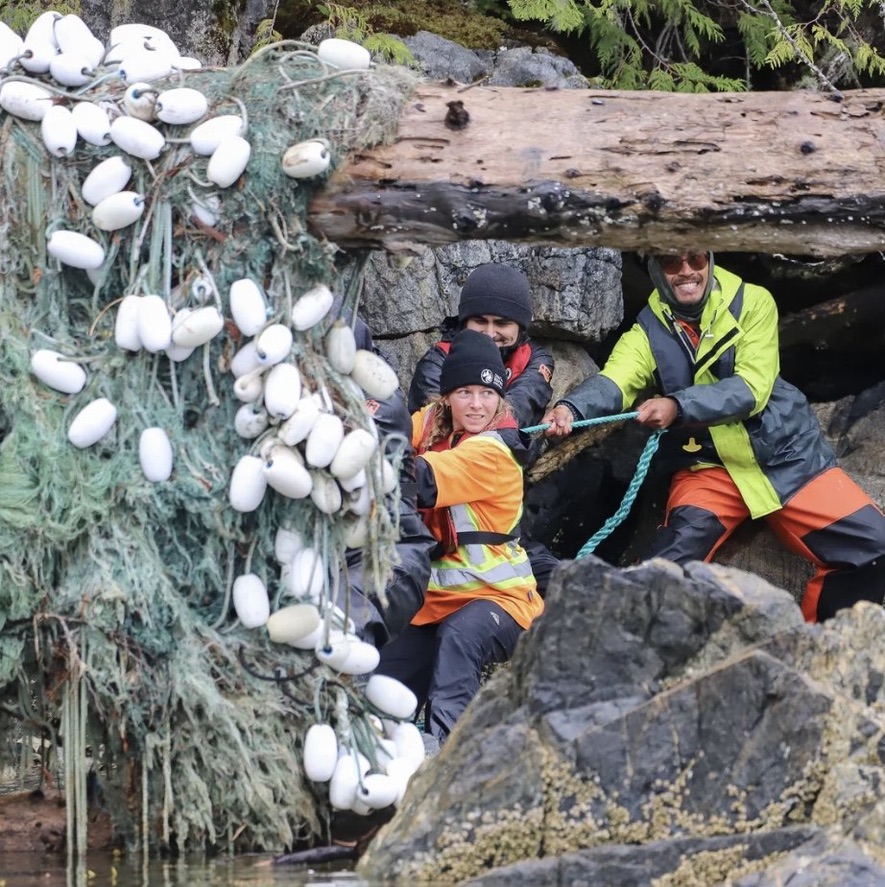
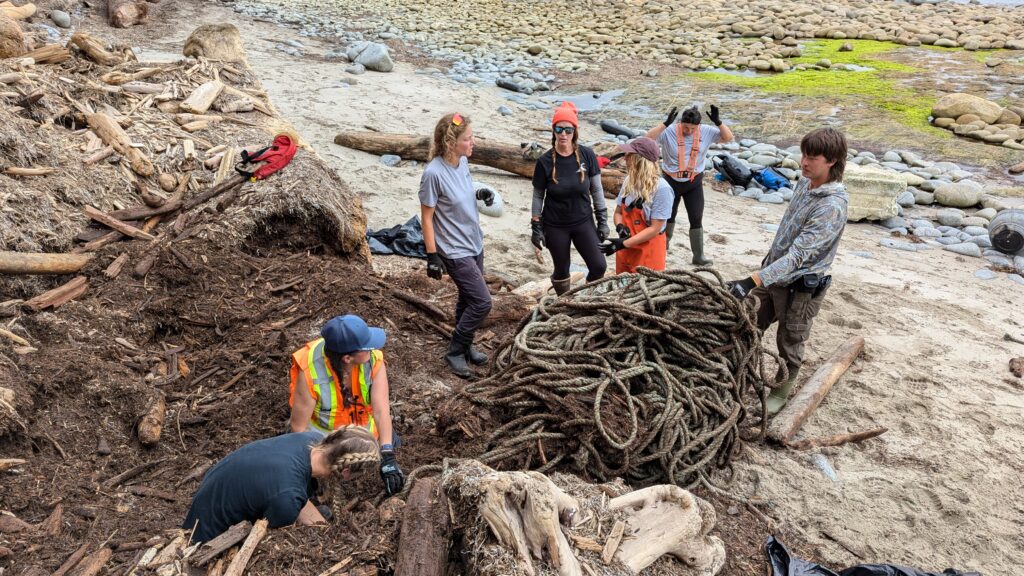
Collecting the debris was a challenge but moving it off the beaches was a logistical nightmare. The group had to move almost all of it by kayak back to the landing craft before transporting it back to Grief Bay and loading it into “super sacks,” where it was secured to land awaiting helicopter pickup to finally remove it. From there, it was sorted into recyclables and garbage, with the recyclables going to Ocean Legacy in Vancouver to be turned into products such as plastic pots or plastic lumber.
“Once we were done everything and we put it in a pile you can really get a scope on how much we found out there and how it must be on the rest of the coast,” said Nelson. “It’s unbelievable how much debris is out there and how much of a threat it is to the animals and everything. Every little bit helps.”
Walkus agrees, saying she walked away from the project with an entirely different perspective.
“I think this project opened some eyes to just how quickly marine pollution can accumulate and how much we, as stewards for the land and waters, need to step up when it comes to garbage and debris,” she shared. “I walked away with a new lens on how I look at consumerism and where things end up. I was already trying to live a more minimalist lifestyle and this project really solidified that desire to leave a smaller footprint.”
Featured Image: Megan Baker Small. All other images: Wuikinuxv and Rugged Coast.
